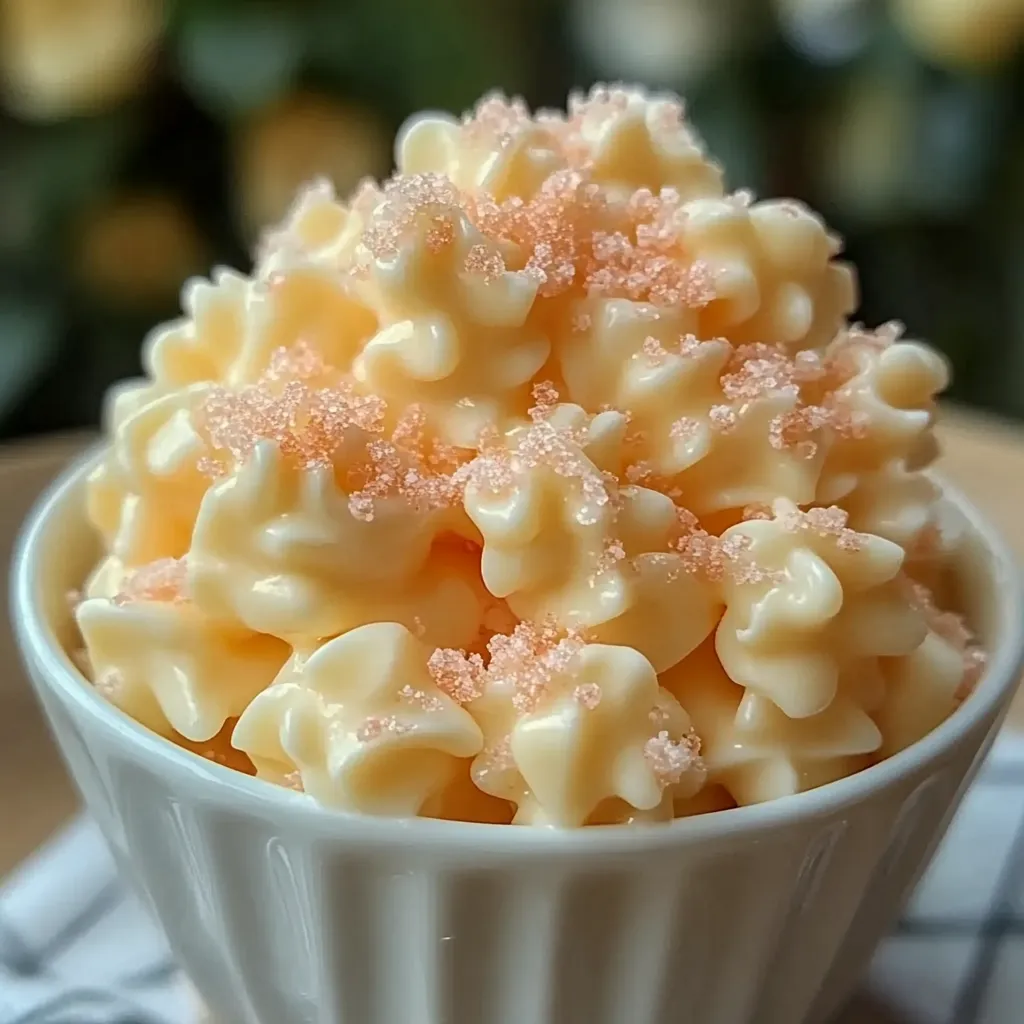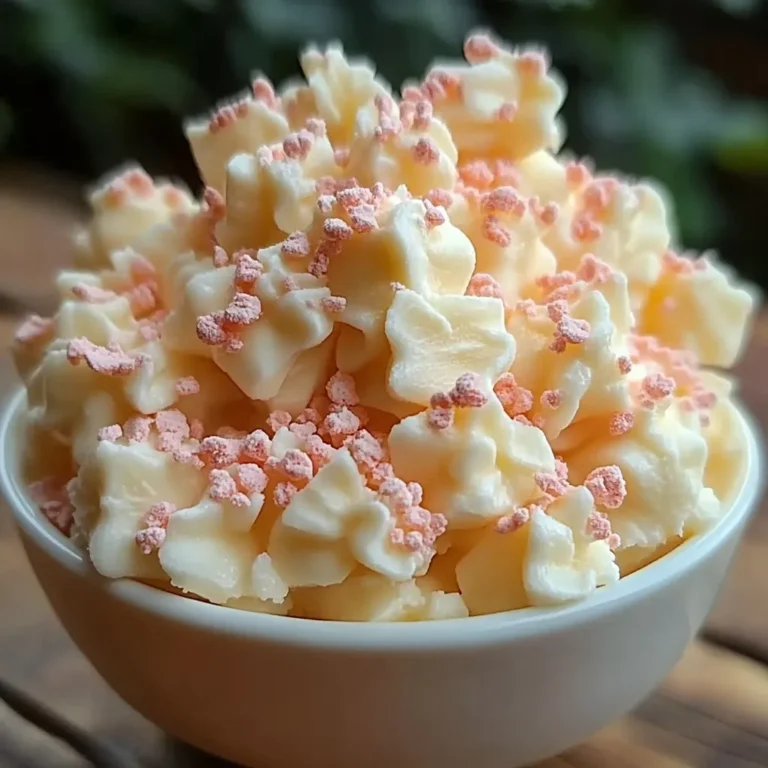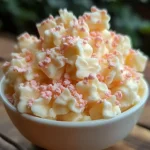Introduction to Kentucky Cream Pull Candy
Kentucky Cream Pull Candy is a unique Southern treat renowned for its silky texture and delicate, buttery flavor. Unlike typical hard candies or chewy taffies, this confection simply melts in your mouth, offering a nostalgic sweetness that captures the essence of old-fashioned candy-making.
This beloved sweet has long held a special place in Southern homes, especially in central Kentucky, where families traditionally gather during the winter holidays to make and share it. The technique requires precision and patience, yet the result—a creamy, cloud-like bite—is always worth the effort.
Its name comes from the signature pulling process, which transforms a hot sugar mixture into soft, opalescent ribbons. The tradition of making Kentucky Cream Pull Candy is deeply rooted in the cultural fabric of the region, continuing to be passed down through generations. Its status as a classic Southern confection isn’t just about flavor—it’s a symbol of time-honored craftsmanship and heartfelt celebration.
Historical Background
The roots of Kentucky Cream Pull Candy stretch back to the early 1800s in central Kentucky. This sweet delicacy was originally created during colder months when the cooler air helped set the candy properly. Families would gather around buttered marble slabs, pulling and shaping the candy by hand—a labor of love that brought people together.
Notable figures helped preserve and promote this sugary Southern icon. One of the most well-known is Ruth Hanly Booe, co-founder of Rebecca Ruth Candies in 1919. Another influential name is Ruth Hunt, who established Ruth Hunt Candies in 1921 and introduced the legendary Blue Monday bar, a chocolate-covered version of cream pull candy still made today.
The 1940s saw the rise of Maxine “Mom” Blakeman, whose cream pull candies gained popularity across Kentucky and beyond. These pioneering women helped solidify the candy’s legacy. For a deep dive into its cultural significance and origin story, My Country Table also provides valuable insight and recipes.
Over time, production evolved from home kitchens to small-scale artisanal shops. Despite technological advancements, most makers still rely on traditional techniques—stirring by hand, pulling with care, and letting the candy “cream” overnight. This evolution reflects not only the candy’s growing popularity but also its enduring charm and authenticity.
Understanding the Candy: Characteristics and Appeal
What sets Kentucky Cream Pull Candy apart is its creamy texture that almost dissolves on your tongue. The flavor is rich and buttery, yet light enough to leave you wanting another bite. It’s a confection that feels luxurious without being overly sweet or sticky.
Though often confused with taffy or vinegar taffy, pull candy is distinct. Taffy is chewier, denser, and typically requires constant stretching for texture. In contrast, pull candy undergoes a unique “creaming” process where it becomes firm on the outside while retaining a soft, airy interior. Learn more about this process from sources like The Spruce Eats and Wikipedia, which explain the differences clearly.
This creaming process, explained in depth on Candace Lately, occurs naturally overnight. Once pulled into glossy ribbons and cut into pieces, the candy is left to rest, during which time it transforms into a soft, opaque confection. This maturation phase is vital for achieving the desired melt-in-your-mouth texture and making the candy safe to handle and store.
Ingredients and Equipment Needed
Making Kentucky Cream Pull Candy requires just a few simple ingredients, but precision is key. Here’s what you’ll need:
Ingredients:
- 2 cups granulated sugar
- 1 cup heavy cream
- 1/2 cup light corn syrup
- 1/8 tsp salt
- 1/2 tsp vanilla extract
- Butter (for greasing your surface)
Essential Equipment:
- Heavy-bottomed saucepan: ensures even heat distribution
- Candy thermometer: critical for reaching the correct hard-ball stage (260°F)
- Marble slab or large baking sheet: provides a flat, cool surface for pouring and pulling the candy
- Spatula: for mixing and scraping
- Kitchen scissors or sharp knife: used to cut the candy into pieces
Each tool plays a vital role in the process. The thermometer, in particular, is essential to avoid undercooking or overcooking, both of which can ruin the batch. A marble slab is preferred for cooling, but a well-buttered baking sheet can also work in a pinch. Having the right tools and ingredients prepared in advance sets the foundation for candy-making success.

Step-by-Step Guide to Making Kentucky Cream Pull Candy
To successfully prepare Kentucky Cream Pull Candy, following each step with care is essential. This process relies heavily on temperature, timing, and technique. With the right approach, you’ll create a batch that’s creamy, melt-in-your-mouth perfect.
Preparing the Work Surface
Before you even start cooking, generously butter a marble slab or a large baking sheet. This step is crucial to prevent the candy from sticking once it’s poured. The smooth surface and layer of butter allow you to work quickly and cleanly during the cooling and pulling stages.
Combining and Cooking the Ingredients
In a heavy-bottomed saucepan, combine the following:
- 2 cups granulated sugar
- 1 cup heavy cream
- 1/2 cup light corn syrup
- 1/8 tsp salt
Stir the mixture constantly over medium heat until the sugar is fully dissolved and the mixture begins to boil. At this point, attach a candy thermometer to the side of your pan. Without stirring further, let the mixture reach 260°F—this is known as the hard-ball stage. Accuracy here is key, as The Spruce Eats outlines in their candy temperature guide.
Cooling and Adding Flavor
As soon as the mixture hits the correct temperature, immediately pour it onto your prepared surface. Allow it to cool slightly—just enough so you can handle it safely. Then, add 1/2 tsp of vanilla extract and begin the pulling process. Timing here is important; wait too long, and the candy becomes too stiff to shape.
Pulling the Candy
Once it’s pliable, begin stretching and folding the candy repeatedly. This aerates it and transforms the translucent syrup into an opaque, creamy consistency. According to Candace Lately, the candy will change from a glossy amber to a soft white hue—this signals that it’s ready to be shaped.
Shaping and Cutting
Pull the candy into long ropes about 1/2 inch thick. Use buttered scissors or a knife to cut it into bite-sized pieces. Place the pieces apart on parchment paper to cool completely. Be sure they don’t touch, or they may stick together before hardening.
Tips and Tricks for Perfect Kentucky Cream Pull Candy
Environmental Considerations
Weather plays a bigger role in candy making than most people think. Cool, dry days are best for pulling candy, as humidity can affect both the texture and ability to set properly. That’s why many traditionalists wait until late fall or winter to make this treat, as recommended in this WV Public article.
Common Mistakes to Avoid
Even a slight deviation in temperature can ruin a batch:
- Overcooking the sugar mixture will lead to brittle, overly hard candy.
- Undercooking results in soft, sticky taffy that won’t cream properly.
- Pulling the candy too little—or too much—can ruin the delicate texture. You’re aiming for a cloud-like consistency that holds its shape.

Storage Recommendations
After shaping and cooling, the candy must be left to set at room temperature overnight. This final stage allows it to complete the creaming process. Once set, store the pieces in an airtight container lined with wax paper. This will keep them fresh and prevent them from sticking together. Stored properly, your Kentucky Cream Pull Candy will stay soft and delicious for up to two weeks.
Variations and Modern Twists on Kentucky Cream Pull Candy
While traditional Kentucky Cream Pull Candy is a beloved classic, there are several fun and creative ways to customize it. Adding modern twists not only enhances the flavor but also makes the candy more festive and personalized.
Flavor Additions
Experimenting with different extracts can elevate the taste. Try incorporating:
- Peppermint extract for a refreshing holiday spin
- Almond extract for a nutty, aromatic twist
- Maple or orange extract for seasonal flair
These subtle additions blend seamlessly with the candy’s creamy base, offering exciting flavor profiles.
Color Variations
Adding a few drops of food coloring to the candy before pulling it allows you to match the season or occasion. For example:
- Red and green for Christmas
- Pastels for Easter
- Orange and black for Halloween
This visual customization transforms each batch into an eye-catching treat perfect for gifting.
Chocolate-Dipped Options
One popular variation is the Blue Monday bar, a dark chocolate-covered version of the candy made famous by Ruth Hunt Candies. Simply dip the cooled pieces into melted dark chocolate, then let them harden on parchment. This version is rich and indulgent, offering a delicious contrast between creamy and crisp textures.
Cultural Significance and Southern Traditions
Kentucky Cream Pull Candy is more than just a sweet treat—it’s a cherished part of Southern culinary heritage. For generations, it has symbolized hospitality, tradition, and the warmth of family gatherings.
This candy has deep roots in Kentucky households. Making it during the winter months, especially around the holidays, has become a family ritual passed down from grandparents to grandchildren. It’s common to find marble slabs passed through generations solely for this purpose.
Beyond the home, this iconic candy plays a role in regional culture. Many small towns in central and eastern Kentucky feature it in their holiday festivals, showcasing it as a symbol of the state’s confectionery craftsmanship. Candy makers like Mom Blakeman’s, Rebecca Ruth, and Ruth Hunt continue to carry the legacy forward. You can read more about its rich cultural ties on My Country Table.
These traditions not only preserve the recipe but also reinforce the candy’s role in Kentucky’s identity. For many locals, the holiday season simply wouldn’t be complete without a batch of hand-pulled, creamed candy resting overnight on the kitchen counter.

FAQs About Kentucky Cream Pull Candy
Why is my cream pull candy too hard or too soft?
The consistency of your candy depends almost entirely on temperature accuracy. If it’s too hard, the syrup likely exceeded 260°F. If it’s too soft and sticky, it probably didn’t reach the hard-ball stage. Using a reliable candy thermometer is essential to avoid these issues. Additionally, under-pulling can prevent the candy from becoming creamy and opaque.
Can I make cream pull candy in humid weather?
It’s possible, but not ideal. Humidity introduces moisture into the candy, affecting its ability to set properly. Your best bet is to make candy on cool, dry days. If humidity is unavoidable, work in an air-conditioned room and use a dehumidifier to create the best environment for success, as suggested by WV Public.
How long does cream pull candy last?
When stored correctly in an airtight container with wax paper between layers, cream pull candy can stay fresh for up to two weeks. For longer shelf life, keep it in a cool, dry place and avoid refrigeration, which can alter the texture.
Is it necessary to use a marble slab?
A marble slab helps cool the candy quickly and evenly, making it easier to pull. However, a buttered baking sheet or countertop can also work. The key is having a non-stick surface and working quickly once the mixture is poured.
Can I make this candy without a candy thermometer?
Technically yes—but it’s risky. The difference between perfect and failed candy can be just a few degrees. Without a thermometer, you’d need to test manually by dropping the syrup into cold water and observing the texture, which is much less precise than using a thermometer.
Conclusion
Making Kentucky Cream Pull Candy is both an art and a tradition. From its rich history in central Kentucky to the hands-on process of pulling and creaming, this candy offers a sweet connection to the past. Whether you’re following a family recipe or discovering it for the first time, every batch tells a story. With the right ingredients, tools, and patience, you can create a confection that’s not just delicious, but meaningful. Add your personal twist with extracts, colors, or chocolate, and share the experience with loved ones—just like Kentuckians have done for generations.
PrintKentucky Cream Pull Candy – Southern Sweet Made Easy
A melt-in-your-mouth, buttery Southern candy made by pulling and creaming a hot sugar mixture into soft, creamy bites. Perfect for holidays and steeped in Kentucky tradition.
- Prep Time: 10 minutes
- Cook Time: 20 minutes
- Total Time: 30 minutes
- Category: Candy / Dessert
- Method: Boil and Hand-Pulled
- Cuisine: Southern American
- Diet: Vegetarian
Ingredients
– 2 cups granulated sugar
– 1 cup heavy cream
– 1/2 cup light corn syrup
– 1/8 tsp salt
– 1/2 tsp vanilla extract
– Butter for greasing
Instructions
1. Butter a marble slab or baking sheet.
2. In a heavy-bottomed saucepan, mix sugar, cream, corn syrup, and salt.
3. Stir over medium heat until sugar dissolves and the mixture boils.
4. Attach a candy thermometer and cook without stirring until it reaches 260°F.
5. Pour onto the buttered surface and cool for 5–10 minutes.
6. Add vanilla and begin pulling the candy until opaque and creamy.
7. Shape into ropes and cut into bite-sized pieces.
8. Let cool completely before storing.
Notes
Best made on cool, dry days. Allow to “cream” overnight for the softest texture. Store in an airtight container with wax paper between layers.


